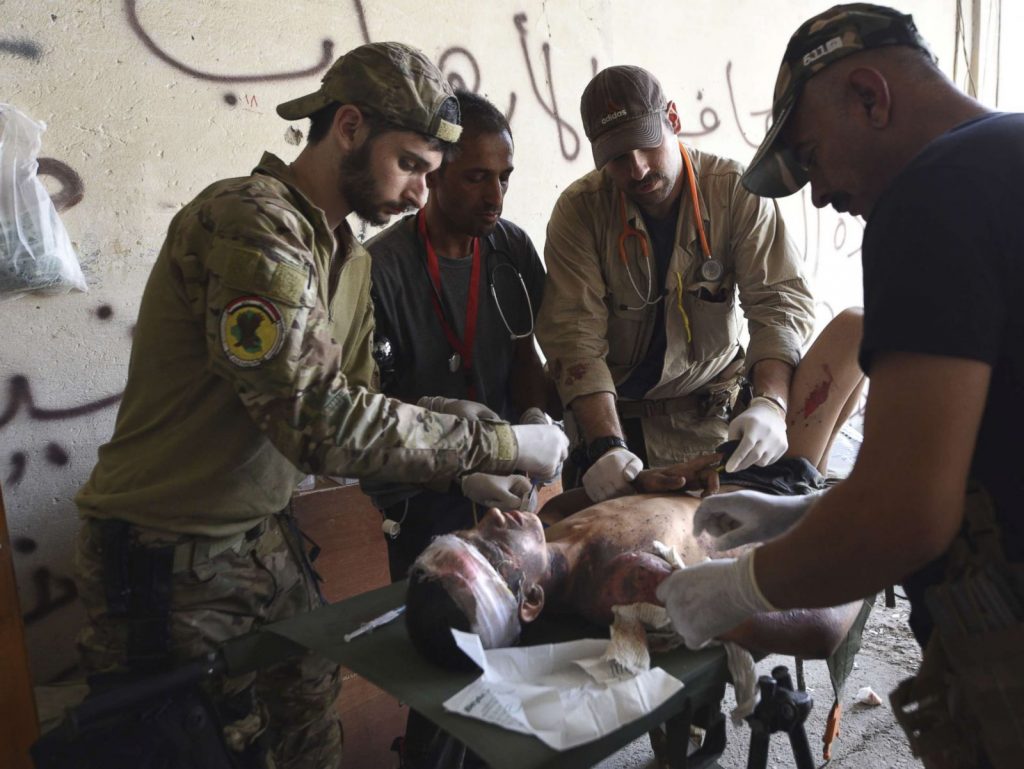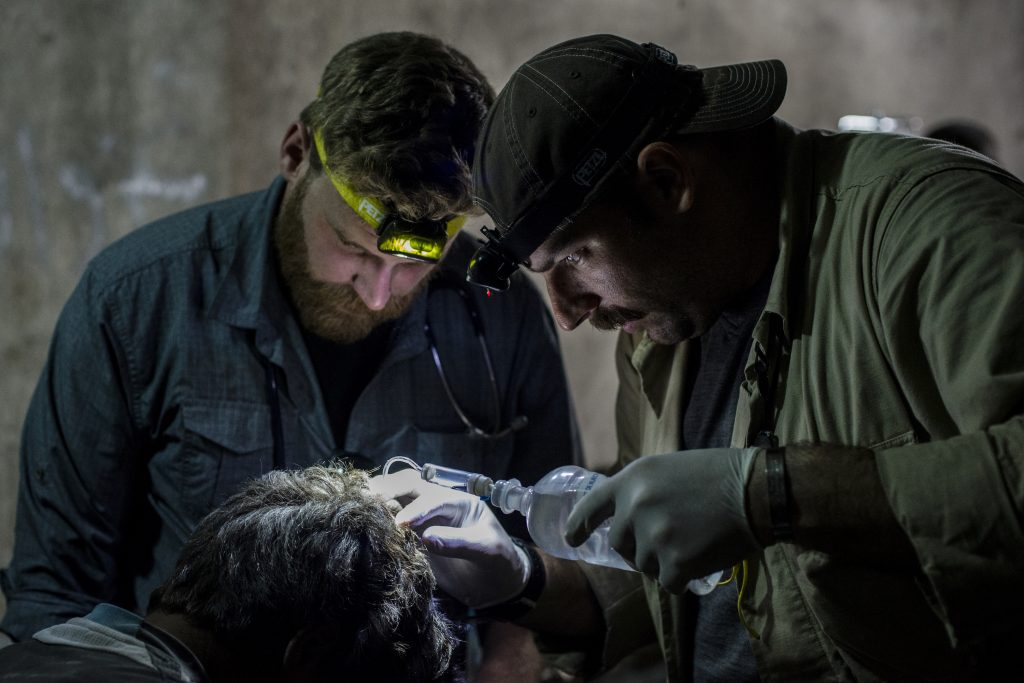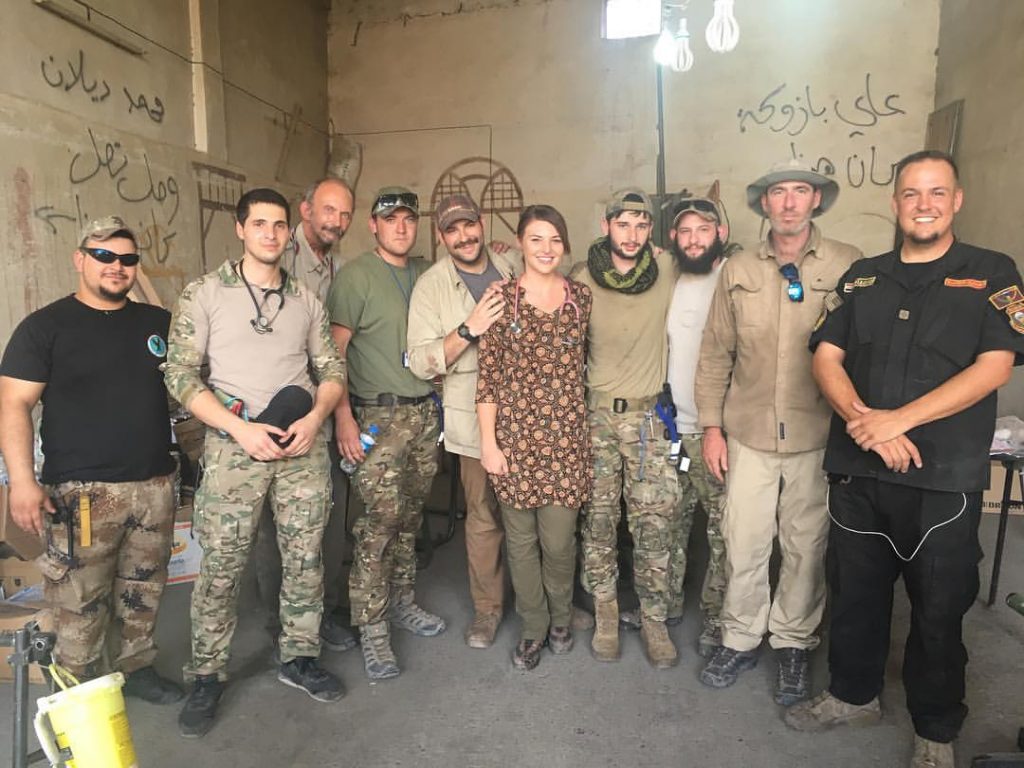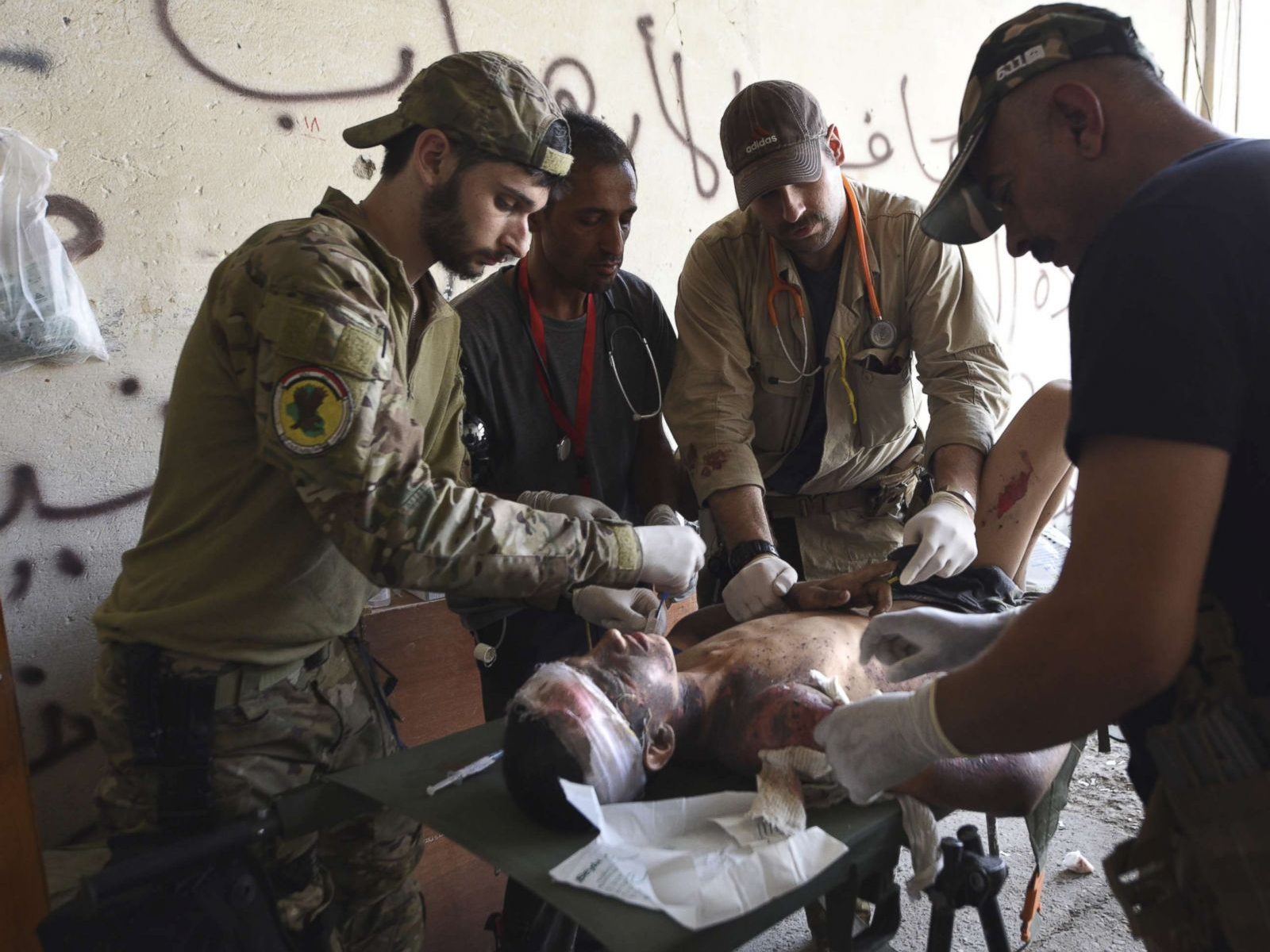We operated 1.5km from the heaviest fighting in Old City, Mosul as Daesh made their brutal last stand in the city.

I spent a week working with Global Response Management in Mosul, Iraq as a medic in their trauma stabilization point. The purpose of a trauma stabilization point is to bring some key emergency medical personnel as far forward as possible to provide initial treatments which will buy a patient time to get to further treatment.
We followed the US military Tactical Combat Casualty Care guidelines that direct priority and extent of treatments for combat injuries.
Additionally, we saw a large number of dehydrated and malnourished civilians plus patients experiencing more traditional medical emergencies like asthma attacks and cardiac problems.
Time and resources permitting we would treat some more minor issues like smaller lacerations or provide dressing changes for some of the soldiers who had been injured, but continued to fight.
By the nature of being so close to civilians evacuating from the old city we ended up seeing a lot of non-trauma patients some of which were still incredibly sick and others that were more minor.

When I was serving with GRM we operated out of a former carpenter’s shop.
Given the fluid nature of combat we didn’t have the luxury of using purpose built structures. As we determined that the fighting was moving further from us than ideal, we would start to scout a new location and with the assistance of Iraqi Special Operations Forces a building would be searched for unexploded ordinance and IEDs left behind by Daesh (extremely common). Once the building was deemed structurally sound and absent of explosives the GRM staff would relocate, the location would be communicated to the Iraqi Army and operations would resume. This whole process only took a few hours in some cases.

I wrote briefly about the experience for the GRM blog. For more detailed content look at the posts below.
Day by day breakdown of my experiences
Preface and Day 1
Day 2
Day 3
Day 4
Day 5
Day 6
